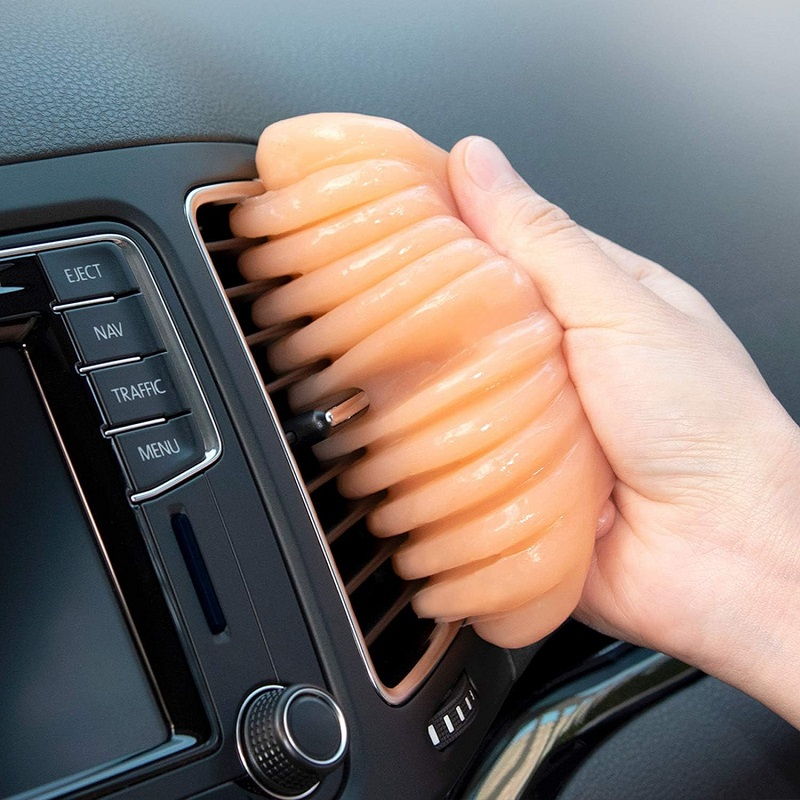This post contains affiliate links. This means I will make a commission at no extra cost to you should you click through and make a purchase [ “As an Amazon Associate, I earn from qualifying purchases.” ]. Read the full disclosure here.
Diesel Fuel Color GuideMechanic.Com Diesel fuel is the fuel used in diesel engines and is composed primarily of hydrocarbons. It is a light to dark-brown color, depending on the purity and grade of the fuel.
It is not uncommon for diesel fuel to appear black, green, or even red, depending on the amount of contaminants and additives present. Diesel fuel is a key component in the transportation industry and is used in a variety of common engines.
Diesel Fuel Color
What Causes?

Diesel fuel can vary in color due to a variety of factors. One of the most common causes is oxidation, which can occur when the fuel is exposed to air in the presence of heat.
Oxidation will turn the fuel a darker shade of yellow or brown. Unstable molecules created during this process can also cause deposits to form in the fuel tank, fuel lines, and engine components, which can further darken the fuel.
Another cause of color change is contamination by water. Water in diesel fuel can cause microbial growth, leading to bacteria and fungi, which can cause the fuel to turn a black or cloudy color. Bacterial growth can also create a slimy texture or an unpleasant odor.
In some cases, fuel color can also be affected by impurities. Diesel fuel can contain small amounts of sulfur and other substances that can cause discoloration.
Finally, fuel can darken over time due to a process known as “aging.” This occurs when the fuel breaks down due to exposure to heat and light, causing the hydrocarbon molecules to break down and form new compounds. These new compounds can affect the fuel’s color and its overall performance.
The Effects of Color Changes in Diesel Fuels on Performance

The use of color as an indicator of diesel fuel quality has become increasingly common, with fuel producers often using different colors to differentiate between different types of diesel. However, color changes can also indicate changes in the fuel’s performance. In this article, we will discuss the effects of color changes in diesel fuels on performance.
When diesel fuel changes color, it is often due to a difference in the fuel’s composition. This can include changes in the levels of sulfur, ash, and other elements.
These changes can affect the fuel’s performance, as each component can have an effect on the fuel’s combustion rate and efficiency.
Read More:
Raptor Transmission: Common Problems
Transmission Hot Idle Engine Common Problems
Sulfur, for example, is an important component of diesel fuel. If the sulfur content of the fuel increases, the fuel may burn faster and more efficiently. On the other hand, if the sulfur content decreases, the fuel may burn more slowly and less efficiently.
Similarly, changes in the ash content of diesel fuel can also affect its performance. Higher levels of ash can reduce the fuel’s combustion rate and efficiency, while lower levels of ash can increase the fuel’s combustion rate and efficiency.
Finally, changes in the other elements in diesel fuel can also affect its performance. For example, higher levels of oxygen can reduce the fuel’s combustion rate and efficiency, while higher levels of hydrocarbons can increase the fuel’s combustion rate and efficiency.
In summary, changes in the color of diesel fuel can indicate changes in its composition, which can affect its performance.
Higher levels of sulfur, ash, and other elements can reduce the fuel’s combustion rate and efficiency, while lower levels of these components can increase its combustion rate and efficiency.
It is important to pay attention to the color of your diesel fuel, as it can help you to identify potential changes in performance.
Analyzing the Color of Diesel Fuel to Detect Contamination

Diesel fuel is a critical component of many industrial and commercial operations and must be kept free of contaminants in order to maintain proper performance. To ensure the fuel is safe and effective, it is important to regularly analyze the color of diesel fuel to detect any contamination.
When diesel fuel is pure and free of contaminants, it has a light yellowish hue. If the fuel is contaminated, it can take on a variety of different colors ranging from light yellow to brown, grey, and even black. The color of diesel fuel can be a useful indicator of contamination.
If the fuel has taken on a light yellow hue, this is generally a sign that the fuel is clean and uncontaminated. If, however, the diesel fuel has taken on a darker color, this may be an indication that the fuel has been contaminated. Contaminants can include water, dirt, and other substances that can reduce the efficiency of the fuel or cause other damage.
If you suspect that the diesel fuel has been contaminated, it is important to take appropriate steps to ensure the fuel is safe and free of contaminants.
The most effective way to do this is to have the fuel tested by a professional laboratory. The laboratory will be able to identify the contaminants in the fuel and recommend the appropriate corrective measures to restore the fuel to its original state.
Analyzing the color of diesel fuel is an important part of keeping this essential fuel free of contaminants and ensuring its proper performance.
By regularly inspecting the color of the fuel and having it tested when necessary, you can help keep your operations running smoothly and efficiently.
How to Diagnose
When it comes to diagnosing changes in the color of your diesel fuel, it is important to understand what causes these changes in order to determine the best course of action.
Diesel fuel can vary in color due to a variety of factors, including oxidation, contamination, water content, and age. In this article, we will discuss the different causes of color changes in diesel fuel and how to diagnose them.
Oxidation: Oxidation is one of the most common causes of diesel fuel color changes. Oxidation occurs when oxygen molecules are absorbed into the fuel, resulting in a darker color.
This can be caused by long-term exposure to air or by improper storage. To diagnose oxidation, inspect the fuel for signs of discoloration or discolored particles. If oxidation is present, it is best to replace the fuel.
Contamination: Contamination can also cause a change in diesel fuel color. Contamination can come from a variety of sources, including dirt, debris, and even bacteria.
To diagnose contamination, inspect the fuel for signs of particles, discoloration, or a foul odor. If contamination is present, it is best to replace the fuel.
Water Content: Water content can also cause a change in diesel fuel color. Water can enter the fuel through condensation or from a leak in the fuel system.
To diagnose water content, inspect the fuel for water droplets or a cloudy appearance. If water content is high, it is best to replace the fuel.
Age: Age can also cause a change in diesel fuel color. As diesel fuel ages, it can become darker due to oxidation or contamination.
To diagnose age, inspect the fuel for signs of discoloration or discolored particles. If the fuel is older than six months, it is best to replace it.
By understanding the common causes of fuel color changes, you can better diagnose the issue and take the necessary steps to prevent future problems. Be sure to inspect your fuel regularly and replace it when necessary to ensure optimal performance and longevity.
The Relationship Between Color and Quality of Diesel Fuel
The quality of diesel fuel is determined by a number of factors, including color. While diesel fuel is commonly a yellowish color, it can range from clear to black.
The color of diesel fuel can provide useful information about its quality, and knowing how to interpret the color can be important for avoiding engine damage.
Clear diesel fuel is generally considered to be of the highest quality. This type of diesel fuel is relatively free from contaminants, including water and sediment.
Clear diesel fuel is also more likely to have a lower sulfur content, meaning it produces fewer pollutants when burned.
Yellow diesel fuel is still of decent quality, but it usually contains more contaminants than clear diesel fuel. Yellow diesel fuel may contain more water and sediment, as well as higher sulfur levels. This type of diesel fuel is usually more likely to cause engine damage due to the presence of contaminants.
Darker colors, such as brown and black, indicate that the diesel fuel is of lower quality. This type of diesel fuel is likely to contain an even higher level of contaminants, as well as more sulfur and other pollutants. When burned, this type of diesel fuel can cause significant damage to engines, and should be avoided if possible.
Overall, the color of diesel fuel can provide useful information about its quality. Clear diesel fuel is typically the highest quality, and is less likely to cause engine damage when burned.
Yellow, brown, and black diesel fuel is of lower quality, and can cause significant damage to engines. For this reason, it is important to pay attention to the color of any diesel fuel to ensure it is of high enough quality for use.
What is the Optimal Color for Diesel Fuel?
The optimal color for diesel fuel is light brown or amber. This color indicates that the fuel is fresh and of high quality. If the diesel fuel has a darker color, it may be an indication that the fuel has been contaminated with other substances or may have deteriorated over time. When buying diesel fuel, it is important to check the color to ensure that it is of good quality.
Does the Color of Diesel Fuel Affect Fuel Economy?
The color of diesel fuel does have an effect on fuel economy, though the difference is relatively small. The majority of diesel fuel available to consumers is dyed to make it easily identifiable, as this is required by law in some countries. The most common color used is a deep red, though it can also be blue, yellow, or clear.
The difference in fuel economy between diesel fuel colors can be attributed to the additive packages added by the refinery. While the dye does not affect the fuel’s chemical composition, the additives do.
For example, clear diesel fuel typically has fewer additives than dyed fuel, which may contribute to an increase in fuel economy.
On the other hand, additives in the dyed fuel may be designed to improve engine performance, which could lead to improved fuel economy.
In addition to the additives, the color of the diesel fuel may also impact its temperature. For example, dark-colored fuel will absorb more heat from the environment than light-colored fuel. This may lead to a decrease in fuel economy due to increased fuel viscosity and increased engine wear.
Overall, the difference in fuel economy between colored and clear diesel fuel is relatively small. However, if you are looking to maximize your fuel economy, you may want to consider using clear diesel fuel, as this is likely to have fewer additives.
Additionally, consider using a fuel additive designed to improve fuel economy, as this could provide a larger benefit than the color of the fuel.
Identifying Impurities in Diesel Fuel Based on Color Changes
Diesel fuel is a petroleum-derived fuel that is used in many engines, including cars and trucks. Its color can range from clear to very dark, depending on the impurities present in the fuel.
Impurities can come from a variety of sources, including contamination during production or storage, and the use of additives. Identifying impurities in diesel fuel based on color can be a useful tool for detecting problems with the fuel.
For starters, fuel that has a clear to light yellow color is generally considered to be of higher quality. Clear fuel with no color indicates that it has been highly refined and is free from impurities.
A light yellow color can indicate the presence of a small amount of water or other organic compounds, which can be removed by filtering.
Darker colors, such as dark brown or black, can indicate the presence of heavier impurities such as dirt, sludge, or sediment.
These impurities can cause a number of problems, including poor fuel economy, increased emissions, and engine damage. If these impurities are present, it is best to discard the fuel and replace it with a fresh batch.
It is important to note that some diesel fuels are dyed to make them easier to identify, and this can affect the color of the fuel.
For example, diesel fuel dyed with a red dye will appear reddish-brown, while diesel fuel dyed with green dye will appear greenish-brown.
The dye itself is generally harmless and will not affect the performance of the engine, but it can be helpful in identifying the fuel type.
Identifying impurities in diesel fuel based on color can be a useful tool for detecting problems with the fuel. Clear or light yellow colors generally indicate a higher quality of fuel, while darker colors can indicate the presence of heavier impurities.
In addition, some diesel fuels are dyed for identification purposes, and this can affect the color of the fuel. By closely monitoring the color of the fuel and discarding fuel with impurities, you can help ensure that your engine runs efficiently and safely.
Conclusion
In conclusion, the color of diesel fuel varies depending on the source, but is typically a pale yellow, light brown or dark brown. It is important to note that the color does not indicate the quality of the fuel, only the source.
- Small Food Trucks for Sale - July 6, 2025
- Turnkey Food Trucks for Sale in California - July 6, 2025
- Mobile Food Trucks for Sale in Texas - July 6, 2025
